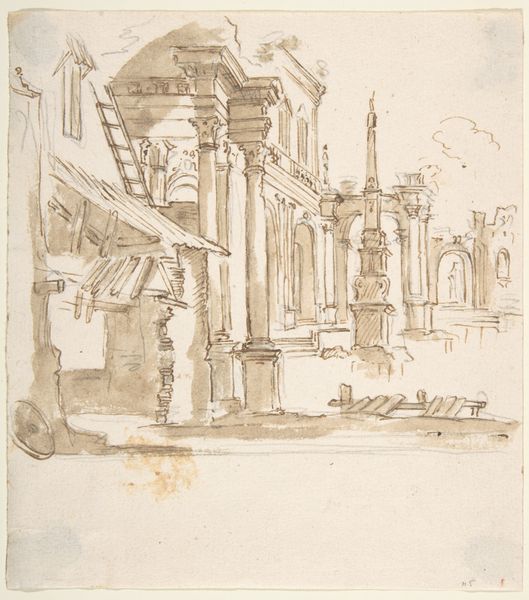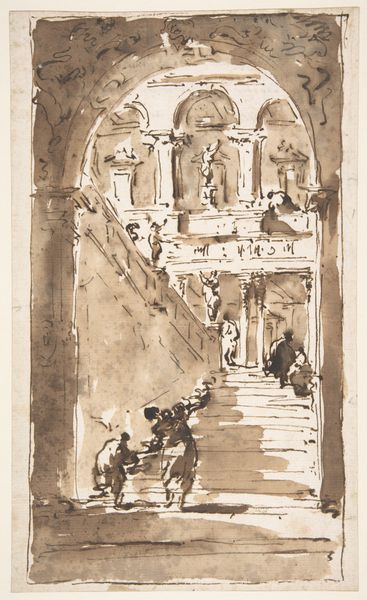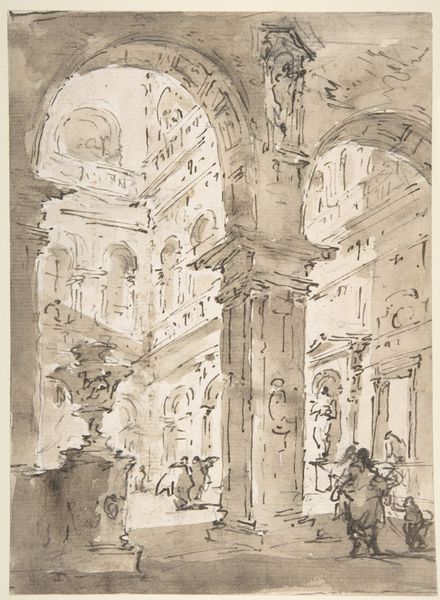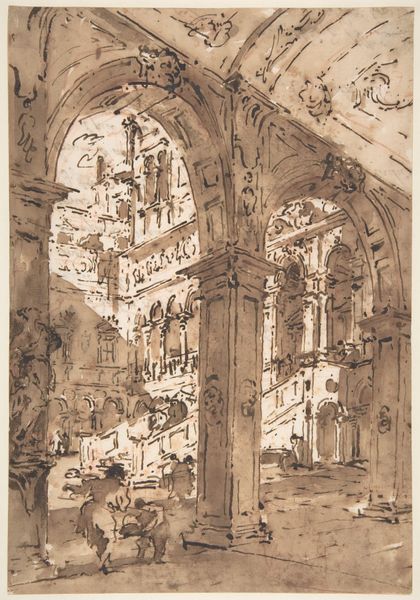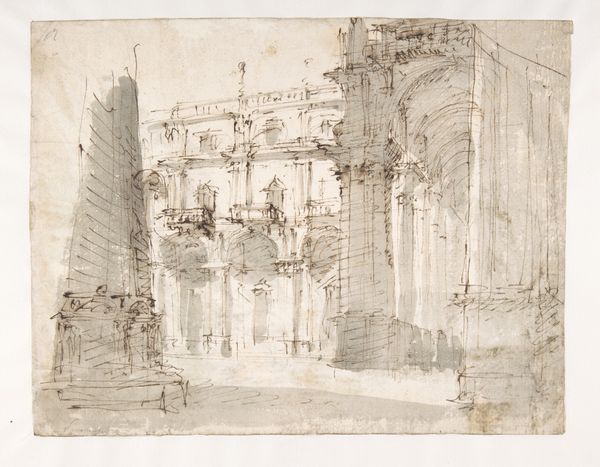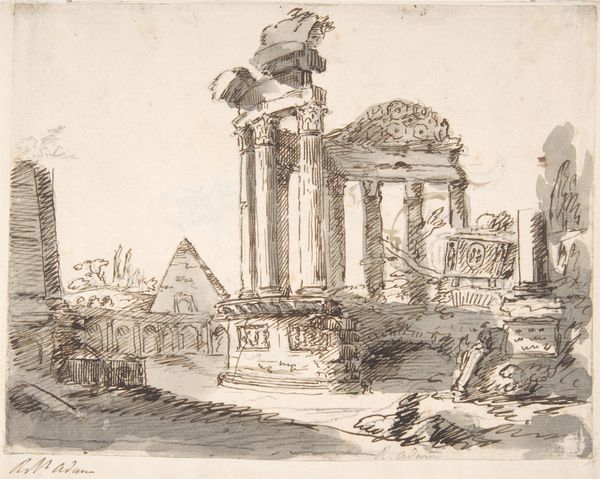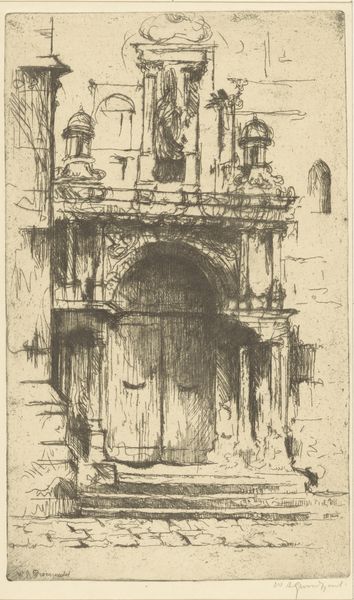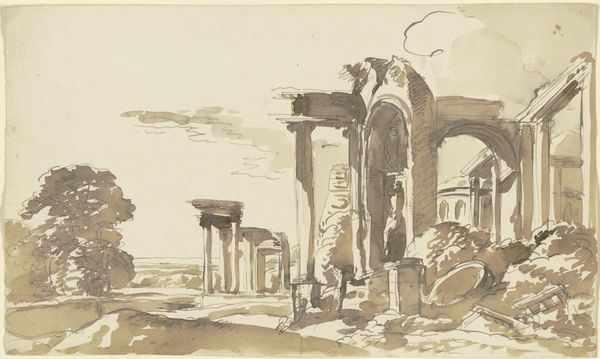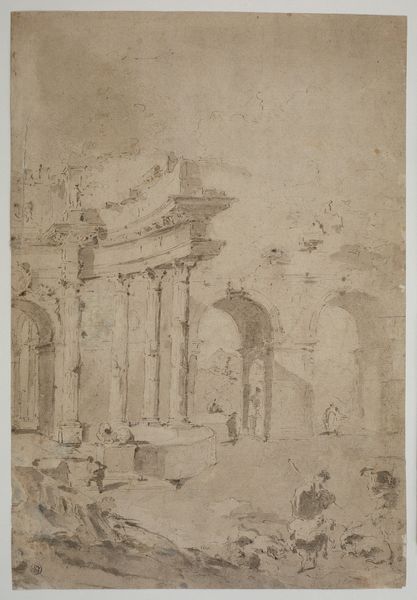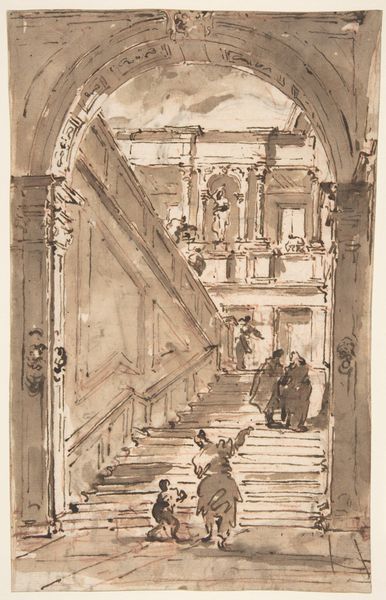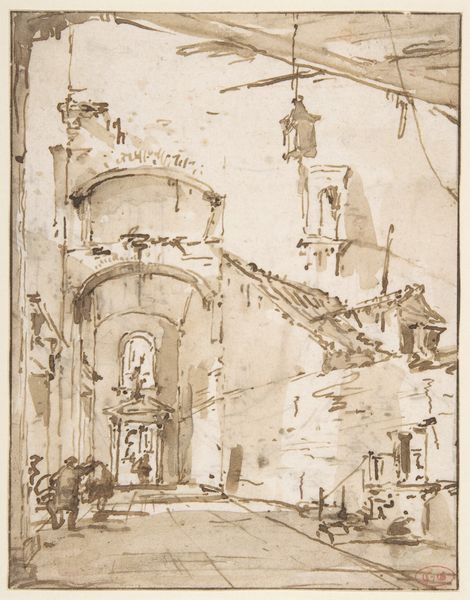
Architectural Capriccio: Garden Entrance to a Palace (recto); Three Masked and Costumed Figures and Other Figure Studies (verso) 1712 - 1793
0:00
0:00
drawing, ink, pen, architecture
#
drawing
#
ink drawing
#
baroque
#
ink painting
#
pen sketch
#
pencil sketch
#
landscape
#
ink
#
pen
#
cityscape
#
architecture
Dimensions: 7 3/16 x 4 1/2in. (18.3 x 11.5cm)
Copyright: Public Domain
Editor: This is "Architectural Capriccio: Garden Entrance to a Palace" by Francesco Guardi, dating from sometime between 1712 and 1793. It's an ink and pen drawing. I’m immediately struck by how theatrical it feels, almost like a stage set. What’s your take? Curator: That theatrical quality speaks volumes about Venice in the 18th century, a city where spectacle and performance permeated everyday life. Guardi was active during a period of social and political shifts. He captures this embrace of theatrics within the Venetian elites. How might the figures populating the architectural space contribute to this "stage set" feel? Editor: Well, they're small and kind of anonymous, almost like props themselves. They don't seem to be interacting with the architecture so much as just occupying it. It's almost like a scene that’s about to begin, not one that’s in progress. Curator: Exactly! Their detached presence enhances the capriccio, or fantasy element. Guardi’s architectural drawings weren’t meant as precise renderings but rather as imaginative constructions reflecting the shifting political powers and desires for escapism that art could represent. What role do you think the quick, sketch-like quality of the drawing plays? Editor: It makes it feel spontaneous and immediate, less like a formal, imposing statement, and more of fleeting impression or a playful study. It’s almost dreamlike. Curator: Precisely. Guardi used loose, rapid strokes which, at the time, mirrored a changing Venice - politically weaker but culturally vibrant. This technique also made the artwork available to the rising merchant classes and their demand for affordable and portable artwork. Thinking about how it circulates influences how we understand the piece itself, wouldn’t you agree? Editor: Definitely. I hadn’t considered how the technique made it more accessible; it brings a new layer of meaning to the sketch. Curator: Art is in dialogue with history, which brings fresh perspective, every time. Editor: I’ll never look at a sketch the same way!
Comments
No comments
Be the first to comment and join the conversation on the ultimate creative platform.
